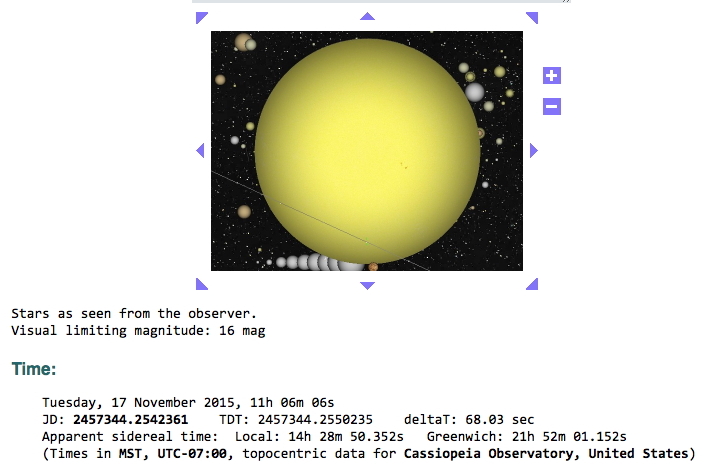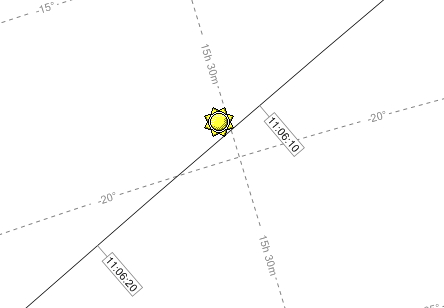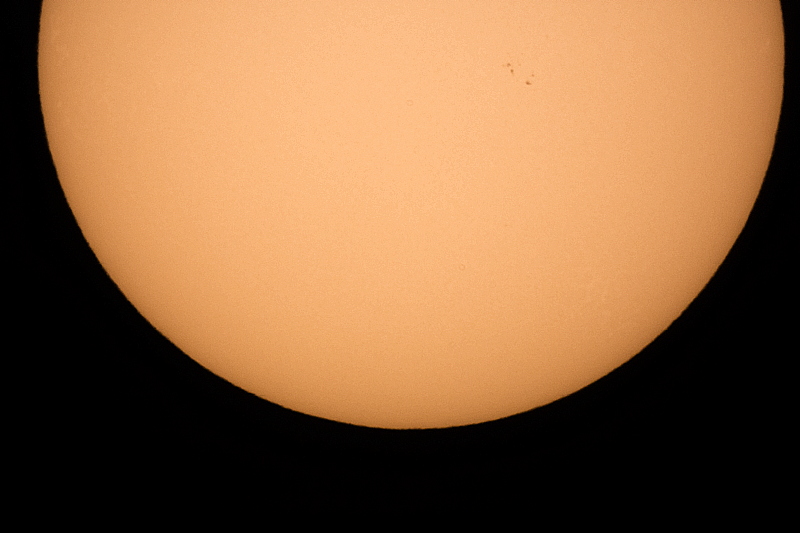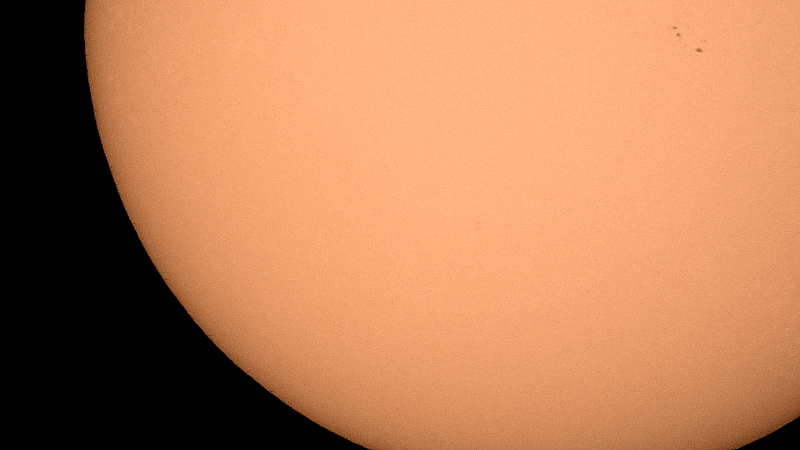Chinese Space Station Tiangong-1 Sun Transit imaging attempt
Posted: 17 November 2015
Saturday, 14 November 2015, dawned mostly clear, but clouds increased during the day, with the sky becoming overcast as sunset approached. Rain came on Sunday, 15 November, with 0.11" from a few brief showers. Early Monday morning, 16 November, a strong thunderstorm came through; got 0.36" rain on the rain gauge south of the house and 0.67" on the gauge north of the house. That's the biggest difference we've seen in the two gauges. The sky began clearing mid-morning, although it was very windy. With a clear sky forecast for Monday night I went out to the observatory about noon to wipe off rain water that was on the dome. There were no leaks inside the POD, but then none were expected. The winds continued all day and the sky became mostly cloudy by late afternoon.
Tuesday, 17 November, dawned clear, cold (33°F), and still rather breezy. The clear sky gave hope that I would be able to image the transit of the Sun by the Chinese Space Station Tiangong-1 later in the morning. CalSky gave this prediction for Cassiopeia Observatory:

Heavens-Above showed it as a near miss:

Which would be right?
I had last successfully imaged Tiangong-1 transiting the Sun on 25 September 2013 using an iPhone 5s on the 8" LX200-ACF telescope. This time I would use the D7200 DSLR on the 8" LX200-ACF.
|
Open: Tuesday, 17 November 2015, 1003 MST Temperature: 52°F |
Session: 881 Conditions: Clear, breezy |
Upon opening the observatory I synced the observatory clock and the D7200 DSLR to the time signal provided by radio station WWV using the observatory shortwave receiver. I then attached the Orion full-aperture solar filter to the 8" telescope.
I then did a GOTO the Sun using the "Sun as Asteroid" AutoStar object technique. 1022 MST: viewed the Sun, 83X. Some small sunspots were visible. However, seeing was not very good.
Mounted the D7200 DSLR at prime focus. Focusing was difficult due to the poor seeing. Took this photo, 1/1600sec, ISO 1600, showing the area of the Sun where CalSky had the transit occurring:

1042 MST: all was ready for the transit, which would (maybe) occur at 110611 MST. One minute before the transit I started a HD video recording, 1.3X crop factor, 60 fps, 1/1600sec, ISO 1600. During post-processing of the video no frame showed the Chinese space station, angular diameter 3.7". Either it missed the Sun (as Heavens-Above) predicted or the seeing was too lousy to image the very small object. This image is a frame from the video at the time of the transit:

|
Close: Tuesday, 17 November 2015, 1122 MST Temperature: 56°F |
Session Length: 1h 19m Conditions: Clear, breezy |
Comments are welcome using Email. If you are on Twitter you can use the button below to tweet this report to your followers. Thanks.
Cassiopeia Observatory Home Page
Copyright ©2015 Michael L. Weasner / mweasner@me.com
URL = http://www.weasner.com/co/Reports/2015/11/17/index.html
